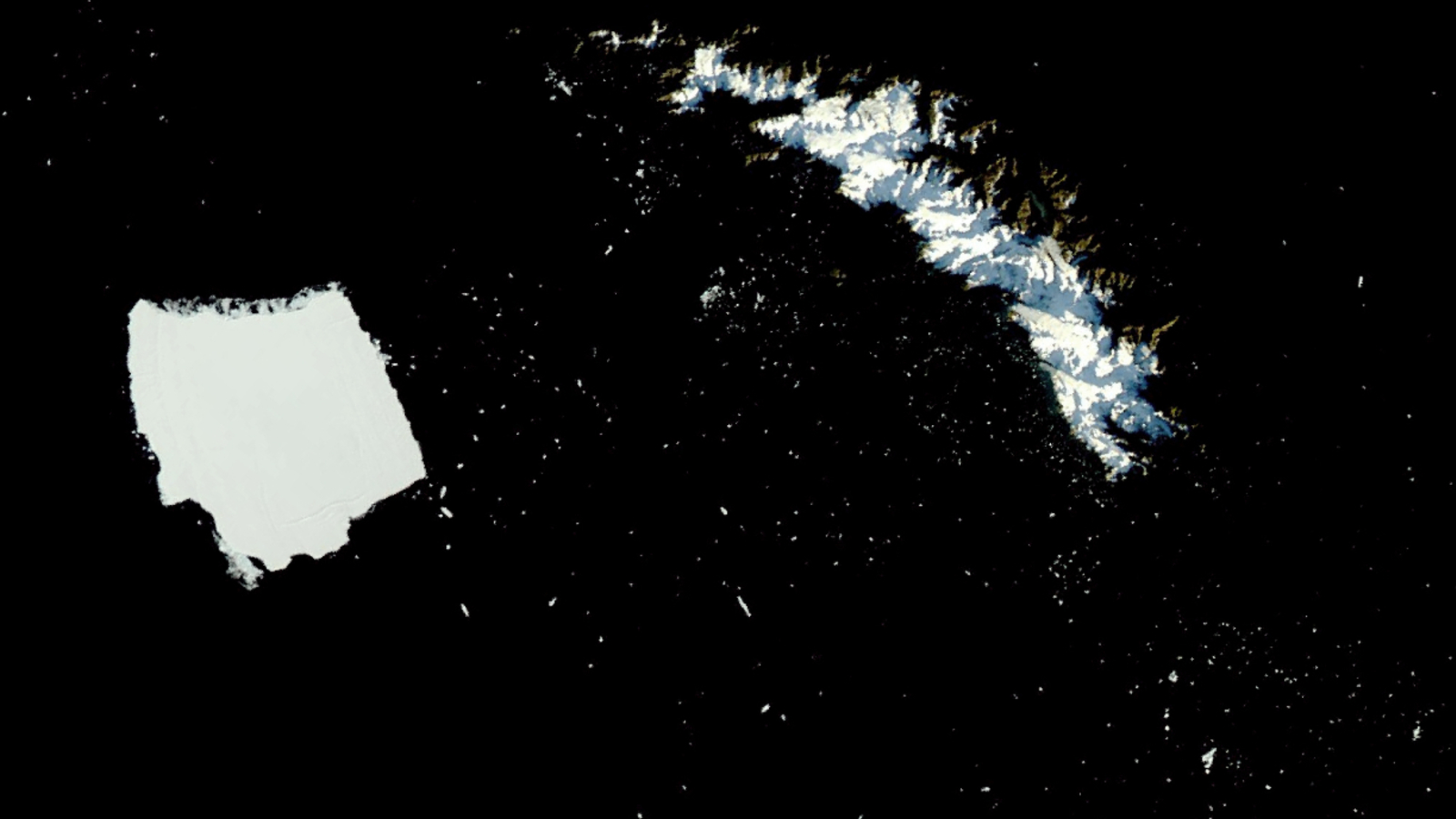Giant Iceberg A23a Begins to Disintegrate Near South Georgia Island











2025-05-20T09:32:50Z

Since grounding off the coast of South Georgia Island in March, thousands of tiny icebergs have calved off the world’s largest iceberg, known as A23a. This massive ice formation, which is now showing signs of breaking apart, was recently captured in a dramatic satellite image taken by NASA’s Aqua satellite on May 3, 2025.
The iceberg A23a is a striking sight, with a surface area of approximately 1,200 square miles (or around 3,100 square kilometers), which is comparable to the size of Long Island in New York. A23a originally separated from the Filchner-Ronne Ice Shelf back in 1986. It became ensnared in the seabed, resulting in its long-standing status as it remained locked in place until January 2023. After a prolonged period of immobility, the iceberg finally began drifting away from the Antarctic mainland, reclaiming the title of the "world's largest iceberg" in June 2023, a title it has held intermittently for decades as larger icebergs have calved and melted.
However, A23a once again found itself trapped in early 2024 after becoming ensnared in a large ocean vortex. It spent several months in this spinning state before breaking free in December 2024 and continuing its northward journey through the Drake Passage, commonly referred to as the "iceberg graveyard," where Antarctic icebergs drift towards their ultimate demise.
In January 2025, observations indicated that A23a was on a trajectory towards South Georgia in the Scotia Sea. By March, it had become lodged on the seafloor approximately 60 miles (or 100 kilometers) from the island’s southwestern coast, marking its third and potentially final grounding in its remarkable life cycle.
Recent satellite images from NASA's Earth Observatory have shown alarming signs of disintegration, particularly along A23a's northern edge, with icy debris now scattered across the surrounding waters. NASA representatives noted that “thousands of iceberg pieces litter the ocean surface near the main berg,” creating a stunning visual reminiscent of a dark starry night.
Although the smaller icebergs that have broken off from A23a appear diminutive in comparison to the megaberg itself, many of them measure at least a kilometer across, thus posing navigational risks for shipping vessels in the area. The largest fragment to separate from A23a has been designated A23c, which covers an area of around 50 square miles (or 130 square kilometers) and is currently drifting southward, just beyond the range of the satellite imagery.
This phenomenon of iceberg disintegration, known as edge wasting, has resulted in A23a losing approximately 200 square miles (or 520 square kilometers) since it became stuck in March. Experts predict that it may take several months, or even years, for the iceberg to fully disintegrate, depending on whether larger fissures occur that could hasten its demise.
Despite its current monumental size, A23a may not retain its title of the largest iceberg for much longer. As of May 16, it is a mere 12 square miles (or 31 square kilometers) larger than its closest competitor, iceberg D15A, as reported by the U.S. National Ice Center.
South Georgia Island, which is uninhabited by humans except for a handful of researchers, is teeming with wildlife. It hosts an abundance of species, including seals and seabirds, with over 2 million penguins residing there, as highlighted by BirdLife International. The presence of a large iceberg near the island poses potential challenges for these species, especially the penguins, who may have to travel several extra miles around the iceberg to access their food sources. Moreover, the meltwater from A23a could affect local ocean temperatures and salinity, which in turn influences marine life.
While the precise impact of A23a on local wildlife remains uncertain, its current position offshore mitigates some of the severe disruptions that could have occurred had it grounded closer to the coastline. Interestingly, some researchers have posited that the melting iceberg could benefit the marine ecosystem by introducing critical nutrients into the surrounding waters.
This is not the first instance in which South Georgia has confronted massive icebergs. In 2020, iceberg A68, one of the world’s largest icebergs at that time, became trapped near the island, raising concerns about the potential threat to penguin colonies. Fortunately, A68 disintegrated into numerous sizable fragments after being torn apart by ocean currents, allowing it to largely melt and eliminate any risk to wildlife.
 Hana Takahashi
Hana Takahashi
Source of the news: Live Science